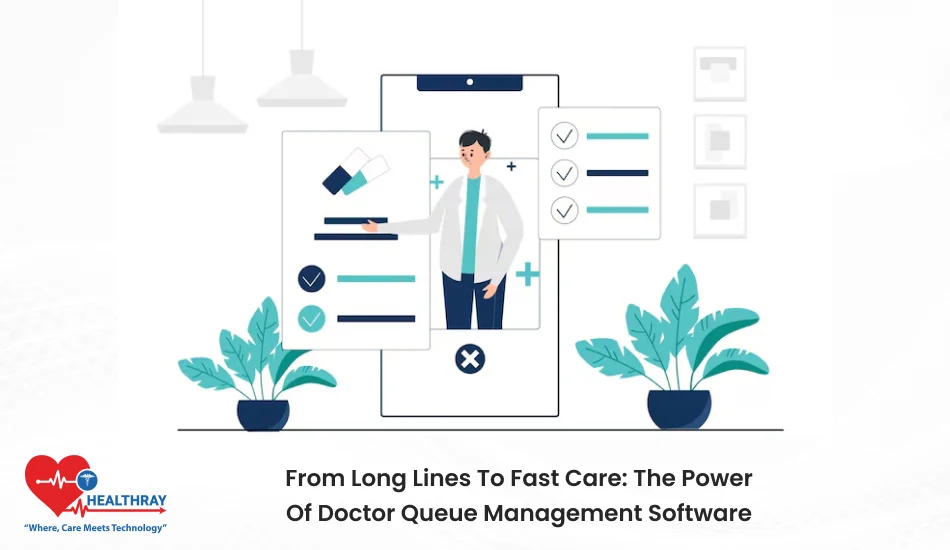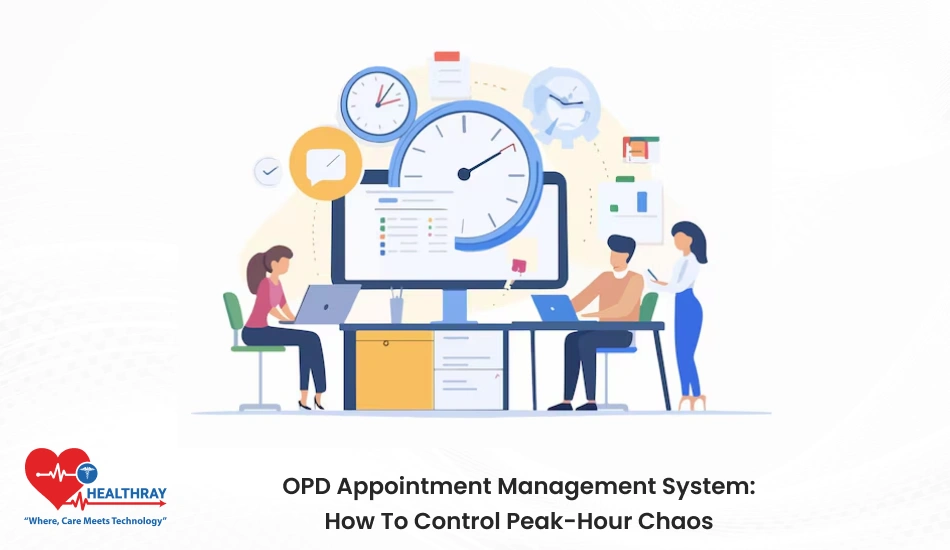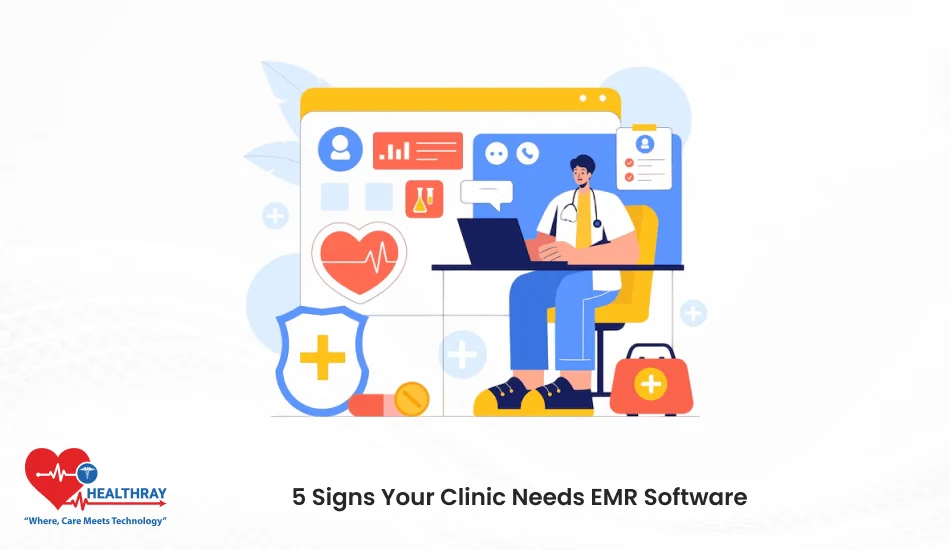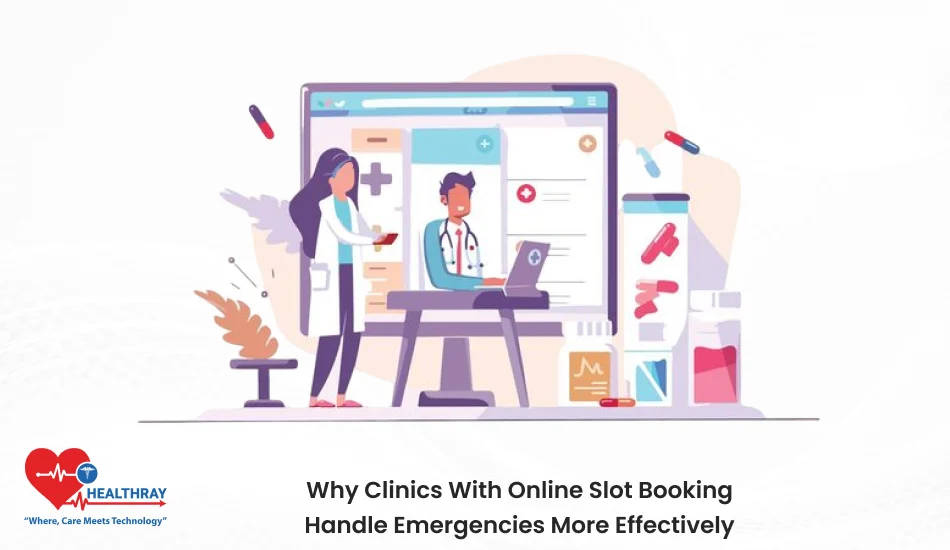Summary
This blog provides a basic overview of the parts of EHR pricing & cost breakdown and is intended to help hospitals to understand how various parts of cost constitute their overall investment. It is a demonstration of how intelligent planning, better workflow choices, and the right EHR software can advance value and eliminate wasteful spending.
It also captures hidden costs, security, cloud versus on premise costs, and the steps that help lead to stronger ROI. Hospitals get a clearer path towards improving financial and operational decision making. If you want to understand every detail, this guide has all you need.
Introduction
Hospitals everywhere want to know what they are actually paying for when they invest in digital systems. This is where EHR Pricing & Cost Breakdown becomes relevant because it transparently details each cost element from setup to long-term support.
There are many options, and when potential hidden costs and upgrades down the line are also considered, selecting EHR software can come to feel overwhelming.
This article helps hospital leaders to see the big picture without any stress. It explains what drives EHR costs and how to measure the real return on investment. When hospitals grasp this information, they make smarter decisions, stop wasting money and get better value from their EHR systems.
EHR Pricing & Cost Breakdown: Main Cost Parts
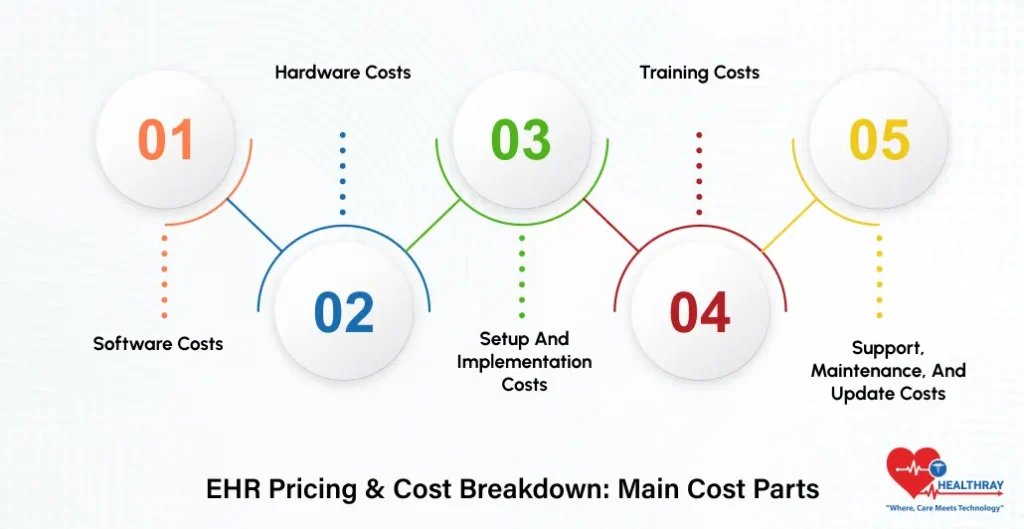
Knowing EHR pricing & cost breakdown helps your hospital make the right decisions. Every hospital is pouring money into digital systems for better care, fewer errors, and speedier work. But each portion of the costs should remain absolutely transparent. Stable prices help hospitals prevent confusion and excessive expenditures.
This section defines each cost component in lay terms. It also allows the hospitals to see the importance of the different pieces in relation to growth and efficiency.
Modern hospitals now follow modern EHR trends for 2025 to better plan, reduce gaps, and achieve long-term value. Such trends emphasize speed, security, automation, and seamless exchange of data.
So, hospitals need to be completely clear before they invest in any EHR software or EHR solutions. This simple breakdown allows hospitals to compare systems, ask the important questions and avoid hidden charges.
Software Costs
Software costs are, indeed, the focal point of any EHR pricing and cost breakdown. Every hospital buys strong EHR software for records, billing, labs, etc. However, prices vary according to the size of the hospital, its amenities, and other licensing approaches.
For instance, some hospitals have one-time payment systems, while others offer subscription services that scale with the hospital. Consequently, this means that hospitals must check on every feature that they need.
Furthermore, costs for the software will vary if the hospital decides to purchase additional modules. Specifically, modules for telehealth, pharmacy, or advanced analytics, for instance, cost more. Additionally, many hospitals also want AI tools now because modern EHR trends 2025 focus on quick insights, auto-notes, and safer decisions. Although they also incur an additional cost, these tools help staff work more quickly.
In addition, a secure EHR platform for PHI also adds more value because hospitals want strong privacy protection and seamless access control. Notably, newer rules require new security technology. Therefore, hospitals need to vet security features in the software before a decision is made.
Finally, hospitals that investigate software costs carefully do not pay for things they do not need. As a result, they also fit the system to ensure long-term growth.
Step towards digital era with our healthcare solution
Revamp your hospital facilities and embrace change for better healthcare management. Ease in managing and organizing large medical datasets leads to effective analysis. Seize the opportunity now!
Hardware Costs
Hardware costs represent another substantial portion of EHR pricing & cost breakdown. Specifically, hospitals need computers, tablets, scanners, printers, and reliable servers. Moreover, departments need sufficient devices to work seamlessly.
In addition, nurses require mobility, while doctors need fast screens. Similarly, billing teams require durable systems. Consequently, hardware must work smoothly every day, with no lag or confusion.
Furthermore, hardware decisions are determined by the EHR systems the hospital decides to implement. Because the vendor hosts the storage, there is also, in fact, reduced server cost with cloud-based EHR systems.
That said, hospitals also require strong internet, fast devices, and good backup tools. In contrast, on-site EHR solutions involve a huge hardware investment, including servers, cooling units, racks, and secured rooms.
In light of these considerations, modern hospitals follow modern EHR trends 2025, which encourage more mobility, the use of voice tools, and wireless access. As a result, hospitals are now buying lightweight tablets and smart devices. Importantly, these devices enable immediate access to information about patients.
Additionally, upgrades to hardware also improve staff experiences. However, each upgrade adds cost. Thus, hospitals must be careful in planning the purchase of hardware and avoid devices that are not necessary.
Setup and Implementation Costs
Setup is an important aspect of EHR pricing & cost breakdown. Therefore, planning for this phase must be done very carefully, as it impacts all departments within the hospital. Notably, setup cost includes installation, uploading data, process mapping, and configuring the system. Additionally, each hospital is different; thus, setup teams fit the system to workflows.
Furthermore, the relative cost of data migration has become one of the biggest setup costs. Existing patient files must be securely migrated to new EHR programs. Importantly, this transfer should be pure, whole, and uncontaminated. In addition, hospitals also migrate lab records, billing records, pharmacy lists, radiology files, and logs from old systems. Consequently, a HIPAA compliant EHR for PHI keeps all this sensitive information secure during the transition.
Moreover, the setup also includes workflow design. To illustrate, no two hospitals are alike. For instance, doctors follow one style. Behind them come nurses. Next comes billing. Therefore, the setup team needs to integrate the EHR system with all of these flows. Ultimately, this step is time-consuming and expensive, but it reduces confusion later.
Modern hospitals tend to follow modern EHR trends 2025 as well, which include seamless automation and rapid task flow. So, setup teams now add automation rules to reduce manual work. Auto-alerts for labs, for example, auto-billing rules, auto-clinical notes, all of these tools provide improvement on ROI in the long run, but incur some initial cost.
Training Costs
Training costs also constitute a significant category in EHR pricing & cost breakdown. There is no good system without good training. Every hospital team needs to train to use EHR software. Doctors need training for charting and orders. Nurses above all require training for medication and care logs. Admin teams need training for billing, and schedules and reporting.
Training includes workshops, videos, tests and real time practice. Some hospitals also ask for extended training support. These extra sessions speed up the adjustment period for the staff. A smoother transition leads to fewer mistakes and a stronger ROI.
Specialized training is also required for a secure EHR platform for PHI. Staff must learn safe data handling, safe login, and communication steps. Without this training, sensitive PHI is at risk.
Training continues even after launch because modern EHR trends 2025 bring new updates. Thus, staff at hospitals need to be trained on a regular basis to smoothly implement new features.
Support, Maintenance, and Update Costs
Support, maintenance, and updates comprise an enormous part of EHR pricing & cost breakdown because hospitals need to run smoothly every single day. Great support teams can fix mistakes quickly and resolve workflow problems before they affect care. In addition, good support also reduces downtime, enhances safety, and helps teams get better use of the system.
Vendors provide support plans of various kinds, including help by phone, help by email, 24-hour assistance, as well as emergency fixes. Furthermore, hospitals often prefer dedicated account managers to help them use their EHR solutions in smarter ways.
Additionally, support and maintenance also include security checks of the secure EHR platform for PHI. Vendors conduct routine security scans, patches, network checks, and threat monitoring. Consequently, these steps protect sensitive data and mitigate major risks. Hospitals need frequent updates, in addition to security. Specifically, these updates incorporate speed and stability, as well as compliance with new healthcare regulations.
Moreover, upgrades add features including AI tools, automation, and new dashboards. Ultimately, these are also features consistent with modern EHR trends 2025, which emphasize speed in decision making and in patient flow.
EHR Pricing & Cost Breakdown: Cloud vs On-Site Costs
| Cost Area | Cloud EHR Costs | On-Site EHR Costs |
| Upfront Cost | Very low upfront cost | Very high upfront cost |
| Software Cost | Subscription-based monthly or yearly fee | One-time license fee, often expensive |
| Hardware Needs | No servers needed; only devices and internet | Servers, storage units, racks, cooling systems needed |
| Setup Cost | Faster and cheaper setup | Slow and costly setup due to heavy infrastructure |
| Maintenance Cost | Vendor handles updates and maintenance | Hospital pays for full IT maintenance and repairs |
| Security Cost | Vendor provides built-in security for PHI | Hospital needs to buy its own security tools |
| Scalability Cost | Easy and low-cost scaling | Costly scaling with new servers and space |
| Long-Term Cost | Higher long-term subscription fees | Lower long-term cost after initial investment |
| Training Cost | Same for both models | Same for both models |
| Data Backup Cost | Included in subscription | Hospital must build and maintain its own backup system |
| PHI Protection | Strong protection through a secure EHR platform for PHI | Depends on hospital IT strength and budget |
| Best For | Small to mid-size hospitals with limited budgets | Large hospitals with strong IT teams |
| Which Costs Less Upfront? | Cloud | Not cheaper upfront |
| Which Saves More Long-Term? | Not always cheaper long-term | On-site after initial investment |
EHR Pricing & Cost Breakdown: Smart Choices for Faster ROI and Lower Costs

Hospitals can boost ROI quickly by making smart decisions in each part of EHR pricing & cost breakdown. The points below show simple ways to reduce costs and increase value.
Choose Only Essential Features
- Choose features that are actually relevant to your team.
- Stay away from big collections of unused tools.
- Save on initial and ongoing costs.
Match the System to Daily Workflows
- Choose EHR software that integrates well into your team’s practice.
- Minimize additional training requirements.
- Faster speeds and less fatigued staff.
Improve Workflow Speed for Faster ROI
- Select systems that minimize clicks and lags.
- Use built-in automation to complete work more quickly.
- Quicker work translates directly to ROI.
Strengthen Security to Avoid Costly Risks
- Use a secure electronic health records system to help minimize the risk of a PHI breach.
- Good security prevents legal and financial losses.
- Sensitive data are secured with regular updates.
Follow Modern EHR Trends 2025
- Consider automation, AI tools and smart alerts.
- Make better decisions based on up-to-date information.
- Increase accuracy and lessen errors.
Pick Scalable and Well-Supported EHR Solutions
- Select systems that can develop along with your hospital.
- Save costly modifications and downtime down the road.
Conclusion
The first step toward a smart investment in EHR is to have clarity. When hospitals understand EHR pricing & cost breakdowns, they select better tools, avoid costs that are hidden, and create better budgets.
Good EHRs also improve workflow, protect PHI and support seamless care. Diebold solutions deliver rapid ROI and sustained value through security, innovations and sound pricing models for hospitals. Each smart choice builds comfort, security and efficiency. Ultimately, the right EHR decisions allow hospitals to grow with confidence.


